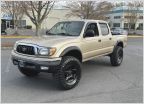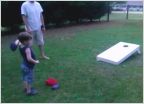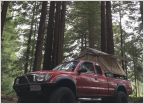-
Welcome to Tacoma World!
You are currently viewing as a guest! To get full-access, you need to register for a FREE account.
As a registered member, you’ll be able to:- Participate in all Tacoma discussion topics
- Communicate privately with other Tacoma owners from around the world
- Post your own photos in our Members Gallery
- Access all special features of the site
AdventureTaco - turbodb's build and adventures
Discussion in '1st Gen. Builds (1995-2004)' started by turbodb, Apr 4, 2017.
Page 261 of 281
Page 261 of 281


 Crashnburn80's 1st Gen TRD Double Cab Build
Crashnburn80's 1st Gen TRD Double Cab Build W00dy's 2003 DoubleCab aka The driveway queen
W00dy's 2003 DoubleCab aka The driveway queen 02 4banger Build
02 4banger Build Looking for battery disconnect switch mounting options
Looking for battery disconnect switch mounting options Lefty's golden taco.
Lefty's golden taco. Kooks Mid Travel DC Build and BS Thread
Kooks Mid Travel DC Build and BS Thread






































